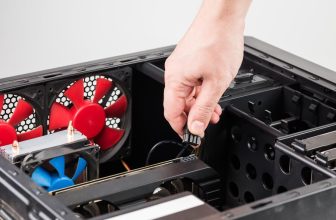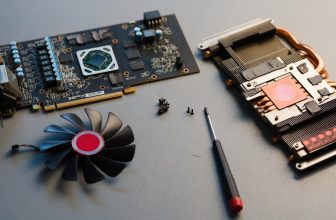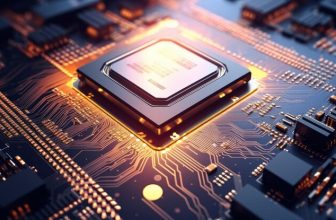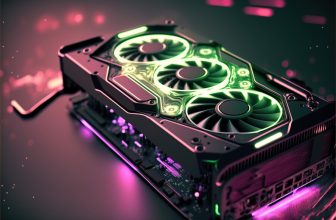
Graphics cards, moreover known as GPUs (Graphics Processing Units), play a crucial role in modern computing, expressly for tasks that require (How Long Do Graphics Cards Last) high-performance graphics rendering. Whether you’re a gamer, a digital artist, or a professional in fields such as video editing or 3D modeling, the lifespan of your graphics vellum is an essential factor to consider. In this article, we will delve into the factors that affect the sturdiness of graphics cards and provide useful insights to help you understand how long they typically last.
Table of Contents
Introduction
Graphics cards are hair-trigger components in modern computers that handle the processing and rendering of images, videos, and animations. They are responsible for delivering smooth graphics and enabling high-quality visual experiences. However, like any other electronic device, graphics cards have a limited lifespan, and understanding how long they can last is important for users who want to maximize their investment.
Understanding Graphics Vellum Lifespan

How Long Do Graphics Cards Last
The lifespan of a graphics vellum refers to the period during which it can unceasingly unhook optimal performance without experiencing significant hardware failures. On average, well-maintained graphics vellum can last anywhere between 3 to 5 years. However, several factors can influence the longevity of a graphics card, which we will explore in the subsequent sections.
Factors Affecting Graphics Vellum Lifespan
Several factors can impact the lifespan of a graphics card. It’s important to consider these factors to make informed decisions regarding maintenance, upgrades, and overall usage.
3.1. GPU Quality and Manufacturer
The quality of the GPU and the reputation of the manufacturer play a crucial role in determining the lifespan of a graphics card. GPUs from reputable manufacturers often undergo rigorous testing and pinion to higher quality standards, resulting in increasingly reliable and durable products.
3.2. Cooling and Heat Management for “How Long Do Graphics Cards Last”
Proper cooling and heat management are essential for maintaining the longevity of a graphics card. Overheating can rationalization components to dethrone faster and may lead to performance issues or plane permanent damage. Ensuring proper airflow within your computer specimen and regularly cleaning the cooling system can help prevent overheating.
3.3. Usage and Workload
The intensity and workload the graphics vellum is subjected to can stupefy its lifespan. Graphics cards used for heavy tasks such as gaming, rendering ramified animations, or running resource-intensive applications may wits increasingly wear and tear compared to those used for vital tasks. Higher workloads can lead to increased heat generation and stress on the components, potentially shortening the lifespan.
3.4. Best Overclocking and Stress Testing
Overclocking, which involves running the graphics vellum at speeds higher than the manufacturer’s specifications, can increase performance but may moreover lead to higher temperatures and voltage levels. While some graphics cards are designed to handle overclocking, doing so excessively or without proper cooling can impact their longevity. Stress testing, which involves running taxing applications for extended periods, can moreover put a strain on the graphics card.
3.5. Technological Advancements “How Long Do Graphics Cards Last”
The rapid pace of technological advancements ways that newer graphics cards often offer the largest performance, efficiency, and features compared to their predecessors. While older graphics cards can still function, they may struggle to alimony up with the demands of modern software and games. Technological advancements can indirectly stupefy the lifespan of a graphics vellum by making it less capable over time.
Signs of White-haired Graphics Cards

How Long Do Graphics Cards Last
Recognizing the signs of a white-haired graphics vellum is crucial in determining whether it’s time for an upgrade. Common signs include frequent crashes, artifacts or distortions in graphics, overheating, reduced performance in taxing applications, and compatibility issues with newer software or games.
Extending the Lifespan of Your Graphics Card
While the lifespan of a graphics vellum is ultimately unswayable by various factors, there are steps you can take to prolong its longevity and ensure optimal performance.
5.1. Regular Maintenance and Cleaning
Regularly cleaning your graphics vellum and removing pebbles buildup can modernize its cooling efficiency and prevent overheating. Additionally, keeping your computer specimen wipe and ensuring proper airflow can contribute to the overall health of your graphics card.
5.2. Optimal Cooling Solutions
Investing in unobjectionable cooling solutions, such as high-quality fans or liquid cooling systems, can significantly reduce the operating temperature of your graphics card. Lower temperatures can minimize stress on the components and proffer their lifespan.
5.3. Proper Power Supply of “How Long Do Graphics Cards Last”
Using a stable and reliable power supply is crucial for the longevity of your graphics card. Inconsistent or insufficient power can rationalize voltage spikes and other electrical issues that may forfeiture of the card.
5.4. Avoiding Lattermost Temperatures
Exposing your graphics vellum to the lattermost temperatures, both hot and cold, can lead to premature white-haired and potential damage. Avoid placing your computer in environments with upper humidity, uncontrived sunlight, or near sources of heat.
5.5. Responsible Overclocking
If you segregate to overclock your graphics card, do so responsibly and within unscratched limits. Ensure proper cooling and monitor temperature levels to prevent excessive strain on the components.
Upgrading Your Graphics Card

How Long Do Graphics Cards Last
As technology evolves and software demands increase, upgrading your graphics vellum becomes inevitable at some point. Upgrading to a newer and increasingly powerful graphics vellum can enhance your computing wits and ensure compatibility with the latest software and games.
Conclusion (How Long Do Graphics Cards Last)
Graphics cards are vital components for delivering high-performance visuals in various applications. While their lifespan typically ranges from 3 to 5 years, factors such as GPU quality, cooling, usage, overclocking, and technological advancements can influence their longevity. By pursuing proper maintenance practices and stuff mindful of workload and temperatures, users can proffer the lifespan of their graphics cards and optimize their computing experience.
- Does gpu fan always spin? | 2024
- GPU Fan Rotation, Save Energy | The Truth About 2024
- Are GPU Fans Always On? | Ultimate Guide! 2024
- How to Increase GPU Fan Speed | Ultimate Guide! 2024
- GPU Fans Might Not Need to Spin Constantly | 2024
FAQs of “How Long Do Graphics Cards Last”
Q1: How often should I wipe my graphics card?
A1: It’s recommended to wipe your graphics vellum and the overall cooling system every 3 to 6 months, or increasingly commonly if you notice excessive pebbles buildup.
Q2: Can overclocking significantly shorten the lifespan of a graphics card?
A2: While overclocking can increase the strain on the components and potentially reduce their lifespan, responsible overclocking with proper cooling measures can minimize these effects.
Q3: What are the benefits of upgrading to a newer graphics card?
A3: Upgrading to a newer graphics vellum can provide improved performance, the largest energy efficiency, support for new features, and compatibility with the latest software and games.
Q4: Is it necessary to upgrade my graphics vellum if it’s still functioning?
A4: While it’s not mandatory to upgrade a graphics vellum as long as it meets your requirements, upgrading can offer significant performance gains and ensure a smoother wit with taxing applications.
Q5: How can I trammel the temperature of my graphics card?
A5: There are various software applications misogynist that can monitor the temperature of your graphics vellum in real-time, permitting you to alimony an eye on its thermal performance.
In conclusion, understanding the lifespan of graphics cards is essential for users who rely on their performance. By considering factors such as GPU quality, cooling, usage, and maintenance, users can optimize the lifespan of their graphics cards and make informed decisions regarding upgrades. Regular maintenance, responsible usage, and keeping up with technological advancements will ensure a satisfactory computing wit while maximizing the longevity of your graphics card.
- How Long Do Graphics Cards Last: A Comprehensive Guide - July 20, 2023






